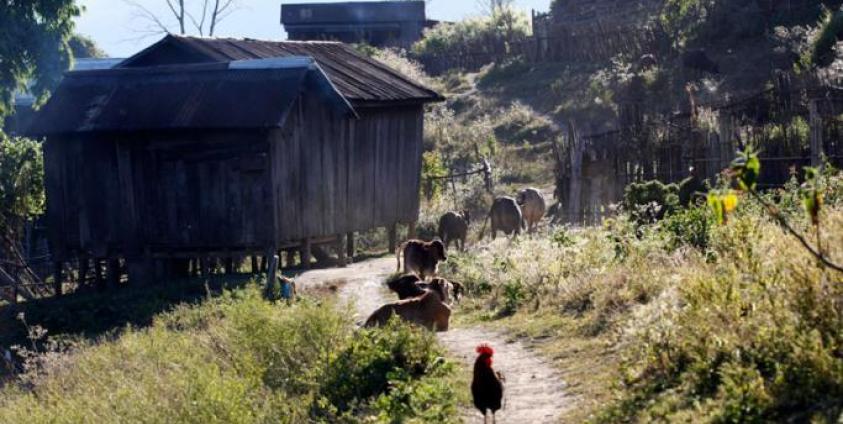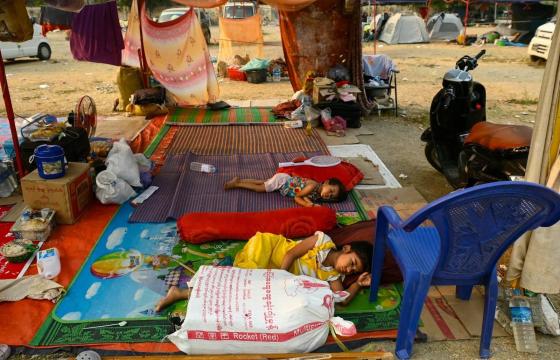Upendranadh Choragudi
The COVID-19 pandemic has set an unprecedented challenge to the countries across the globe, not only on the health system but on the economy, livelihoods and social life of people. While the early warnings were received since Jan 2020, the pandemic has fanned out rapidly across the globe in March and April of the year.
While Myanmar has been able to contain the virility of the COVID-19 to a greater extent, it is not completely immune to this pandemic. WHO recommended measures like social distancing, community awareness, and testing, tracing and quarantine mechanisms are being deployed to contain it. However, the crisis has shown that no part of the economy and society is immune. As early as Mar 2020, there have been reports of possible slow down of the economies of ASEAN especially of countries like Myanmar, with deeper trade links with China (Mizzima Mar17 2020). Many urban industrial activities have shown a slump in production as well as demand from early March onwards.
The need for bouncing back on track is all the more dependent on the collective response of the government, private sector and the communities. Recognizing this, the government has taken steps in outlining a comprehensive plan, “Overcoming as One: COVID19 Economic Recovery Plan (CERP)”.
Key features of this plan include steps to create domestic demand through increasing spending of the government on essentials related to health care, critical infrastructure, social transfers to cushion the income losses of large sections of people in the formal and informal sector employment, incentives to the private sector to re-engage in production and ensure supply chains. Measures to enhance the liquidity in the system through interventions from the banking sector and the central bank are also envisaged.
State Counsellor, Daw Aung San Suu Kyi has pointed out that “ The comprehensive plan balances the needs of all stakeholders while leaving no one behind”. While acknowledging the need for resetting the priorities in light of anticipated shortfall in revenues and reallocation of resources, she cautions that “ …such reallocations shall not come at the expense of hard-fought-for fundamental social and economic freedoms now enjoyed in Myanmar. In this spirit, the CERP identifies programs like cash for work, cash transfers, support to the agriculture sector, protecting micro and small scale enterprises as some of the critical actions to bring back the production as well as demand in the economy.
Though short and crisp, CERP document has a wide range in terms of its scope and coverage of various economic and social recovery actions. It identifies 7 goals, 10 strategies, 36 action plans and 76 actions covering fiscal measures and human development and health sector focused responses to the pandemic and its recovery phase.
Broader areas of interventions include; monetary stimulus measures from the central bank. this is understandable given that Myanmar’s macro parameters are relatively stable and there is space for expansionary measures. CERP identifies the need for the central bank’s financing and removing the existing cap on the fiscal deficit and resetting it to a reasonable level. This is important as it releases resources for the government to undertake steps that would stimulate the economy.
The central bank, the banking sector and the government have an important to support the private sector for its recovery. Easing the difficulties faced by the private sector in terms of low-cost supply of funds through rescheduling and restructuring loans, loan guarantees, offering lines of credit are identified as critical interventions to be undertaken in the coming months. Similarly offering agriculture loans to farmers and agribusinesses would enable recovering from the income losses and ensuring adequate investments in the coming agriculture season.
CERP identifies a set of policy measures to promote investment from domestic and foreign investors which would enable expansion of economic activities. Easing of the permits, approvals and licenses for companies that produce COVID-19 related medical equipment and supplies, supporting PPP model for quick and necessary infrastructure projects, are some of the actions that would bring back the economy on the track. Trade incentives would also enable export competitiveness and bring a cushion to the exporters who faced difficulties due to the slump in the demand.
Easing the impact of COVID19 on labour and workers and also on households through social protection and security schemes forms a major part of the CERP. The government has recognised the vast informal sector workers, returned migrants and their household income losses due to the restrictions of economic activities. Towards this end, CERP proposals include cash for work programs that would augment community infrastructure in rural areas, and cash transfers for the most vulnerable households, including internally displaced persons and return migrants. These schemes along with existing social security measures for registered workers in the factory sector would go a long way in addressing the vulnerability of the marginalized households. Some of the critical aspects of institutional arrangements, governance challenges need to be addressed so that these schemes reach the needy. This is where the role of local institutions at the township level becomes critical in terms of identification of beneficiaries, community works for cash-for-work programs and monitoring of the schemes. This perhaps may be an opportunity for Myanmar to practice some of the accountability and decentralization ideas. Also, expanding the reach and universalization of some of the social protection schemes can be explored at this stage for the long term well being of a vulnerable population.
Further, CERP identifies the spaces for promoting innovations in terms of delivery of public services and creating platforms that would enhance the welfare of the people. Financial inclusion through e-banking and e-payment systems, promotion of e-commerce platforms are critical, to begin within urban and peri-urban areas of the country. Opportunities of reaching to the rural hinterlands can also be explored through such innovations.
Two critical and important areas of CERP goals relate to strengthening the health system and COVID-19 response funding mechanisms. These are critical for not only to tide over the current crisis but it would also build resilience in the system. Towards this end, CERP identifies improving human resources in the health care system (recruitment and training of personnel), importing key medical equipment to address pandemic, improvements in infrastructure at key health care institutions and investments in preventive measures. Financing COVID-19 response plans require resources which are proposed to be accessed from restricting/reallocating the budget of the union government as well as seeking international assistance. Development partners must join in the effort of the government and identify mechanisms for additional financing not only for the COVID-19 related health expenditures but also towards long term economic recovery. Technical assistance from specialized agencies like the WHO, World Bank, IMF, UNDP, ILO, UNICEF and others becomes all the more critical at this juncture.
<><><>
Village in Chin State. Photo: Mizzima








